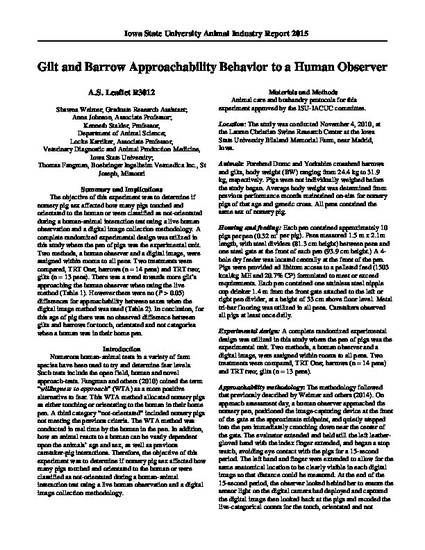
The objective of this experiment was to determine if nursery pig sex affected how many pigs touched and orientated to the human or were classified as not-orientated during a human-animal interaction test using a live human observation and a digital image collection methodology. A complete randomized experimental design was utilized in this study where the pen of pigs was the experimental unit. Two methods, a human observer and a digital image, were assigned within rooms to all pens. Two treatments were compared, TRT One; barrows (n = 14 pens) and TRT two; gilts (n = 13 pens). There was a trend towards more gilt’s approaching the human observer when using the live method (Table 1). However there were no (P > 0.05) differences for approachability between sexes when the digital image method was used (Table 2). In conclusion, for this age of pig there was no observed difference between gilts and barrows for touch, orientated and not categories when a human was in their home pen.
Available at: http://works.bepress.com/kenneth_stalder/133/
